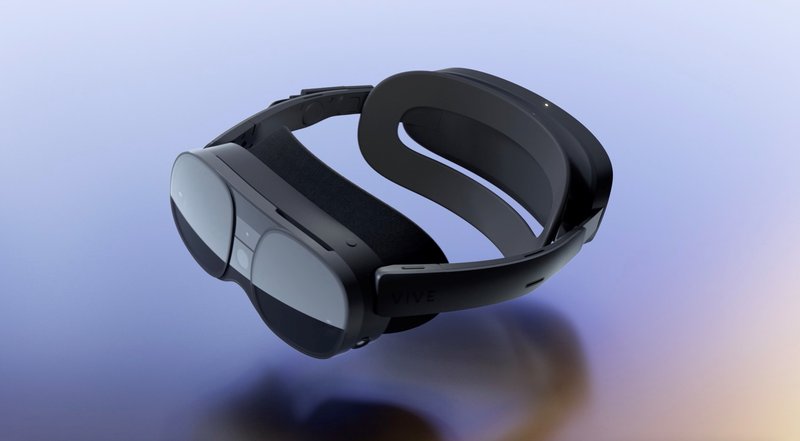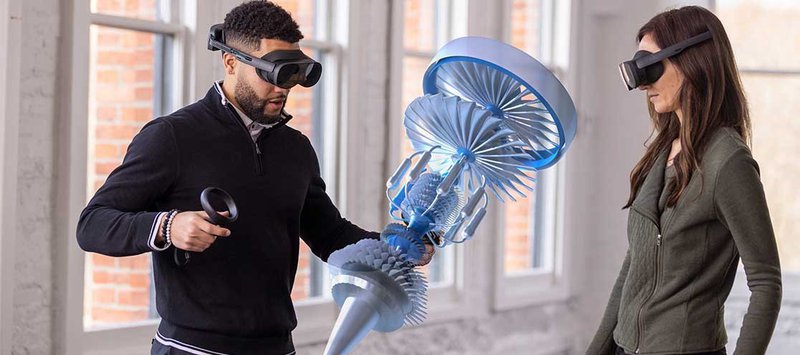The worldwide virtual reality (VR) market will exceed $29 billion in 2023 and expand at a 22.9% compounded annual growth rate to top $187 billion by 2032, according to research firm Precedence Research.
VR will undoubtedly play a prominent role in shaping how people live, work, and play moving forward. However, key industry players, from hardware makers to application developers, must continue improving the overall experience in a way that genuinely fits actual user behavior and needs in order to realize the promising projection.
Here are four trends to watch in 2024 that could unlock opportunities in both the consumer and business sectors, accelerating new user adoption.
Rise of standalone VR: higher performance, more versatility

When "VR" first entered the popular lexicon in the previous decade, standalone or all-in-one headsets generally had sub-par display resolution and processing capability. Though more straightforward to set up compared with PC VR and less intimidating for novices, graphically intensive games and immersion that felt natural and intuitive simply weren't possible.
Standalone devices' performance and overall experience have certainly jumped a notch in recent years without sacrificing the form factor's bread and butter – portability and simple setup. Some of the latest hardware offerings, such as the VIVE XR Elite, can be transformed into a pair of fully immersive glasses or connected to a PC for more processing power.
As usage extends beyond homes and offices, the improved versatility of headsets to function in varied locations and handle complex applications will help attract the next wave of users.
Tracking precision is king
![]()
Being immersed in virtual reality can be an amazing experience. Many elements, like display fidelity, haptic feedback, and 3D spatial audio, contribute to "trick" the human senses into accepting these otherworldly environments.
In regards to enhancing the sense of realism, tracking is one area that has seen massive progress. Whether it's maneuvering in VR gameplay or interacting and dancing in social communities such as VRChat, accurately replicating physical actions in computer-generated worlds forms the bedrock of presence in VR. Nothing is more annoying and takes users out of the experience faster than long lags and awkward, unnatural moves.
Easily attachable accessories for facial and eye tracking, highly portable sensors that transport real-world objects into VR, as well as the compact, self-tracking VIVE Ultimate Tracker that enables full-body tracking, have combined to deliver more expressive, near zero-lag, and lifelike immersion.
Revolutionary depth-sensing technology embedded directly into the headsets further refines spatial recognition and positional tracking, delivering safer and more creative use cases that allow interaction with one's surroundings.
In the coming years, expect to see more innovative tracking devices that will take synchronization of the physical and digital to new heights.
VR passthrough: bridging present and future user behaviors
VR passthrough allows users to "see through" the headset displays and get a view of their physical surroundings while still wearing the immersive device. This is made possible by cameras and sensors that capture the external environment and provide a "live feed" with software assistance to correct perspective and fill in camera blind spots.
While the technology is essential to expanding headset functionality into new applications such as mixed reality (MR), it has another more practical purpose.
Wearing a headset and being cut off from the real world for long periods is alien, inconvenient, and uncomfortable for some, a significant hurdle to adoption growth. By providing quick access to the real world while immersed, VR becomes less foreign and better matches existing user demand for situational awareness.
Passthrough capability that brings “real life" in high resolution and full color to VR headsets will become a must-have feature, helping entice those still on the fence.
A business game-changer

The pandemic underscored the importance of virtual work environments that can facilitate or even enhance a wide range of work processes. The result was an accelerated development of immersive experiences in the business sector, shepherding new and improved ways for individuals to collaborate despite physical distances.
In addition to offering a complete portfolio of immersive devices, hardware manufacturers such as HTC VIVE also provide complementary software solutions and support services, all catered towards helping businesses leverage the full potential of VR.
VR applications already impact industries and business disciplines, such as manufacturing, employee training, medical therapy, and education. Although these sectors are less celebrated by the media, they constitute a major driving force behind the growth of VR and are where many technological breakthroughs occur.
Imagine engineers, industrial designers, product managers, and sales and marketing professionals all working simultaneously on a prototype in a lifelike virtual lab, regardless of their physical locations. Each team member can access the high-resolution 3D model and review and modify it from their preferred vantage points. The graphics experience is smooth and in real time, streamlining the entire development workflow. Tasks and decisions that are impossible in a brick-and-mortar workplace are made convenient by VR. This is just the tip of the iceberg.
VR: 2024 and beyond
The global VR market is poised for significant growth in 2024 and beyond. Versatile, high-performing standalone headsets and accessories revolutionizing tracking precision will spearhead new user adoption. The integration of passthrough technology into VR will be a crucial step to bridging present user behavior and future applications, making the immersive experience more practical and appealing to a broader target audience.
While the consumer segment receives much of the media attention, the enterprise sector will continue to be a major source of growth and innovation. From remote collaboration and VR offices to design visualization and decision-making processes, VR will usher in a new era of business operation.


